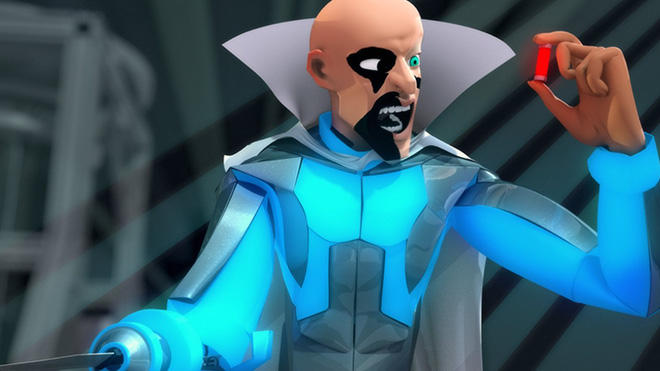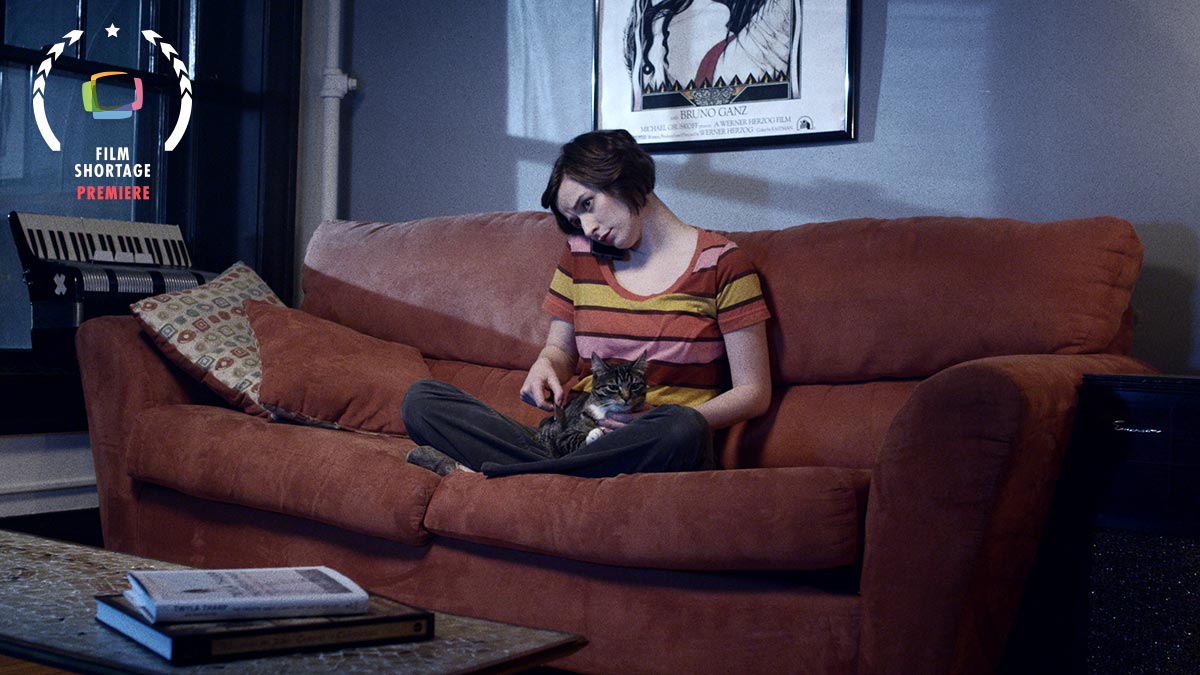Fleeing the violence of Pancho Villa’s revolution, a widow finds refuge with a unit of female freedom fighters known as soldaderas… only to discover her estranged sister among them
“El Gato Feo” (The Ugly Cat), directed by Daniel Fabelo, is a captivating short Western drama that immerses viewers in the tumultuous era of Pancho Villa’s revolution. The film follows a widow fleeing the violence of the Mexican Revolution who finds unexpected refuge with a unit of female freedom fighters, known as soldaderas. Amidst the struggle for survival and justice, she encounters her estranged sister among the ranks of these courageous women, setting the stage for a dramatic and emotional reunion.
Inspired by his own family’s history and the incredible bravery of the soldaderas, Fabelo crafts a narrative that merges the gritty realism of the American Western with the rich historical context of the Mexican Revolution. “El Gato Feo” not only brings to life the legendary strength and resilience of these women but also aims to reflect modern struggles along the Rio Grande. By highlighting the often-overlooked contributions of soldaderas, Fabelo hopes to inspire and reconnect Latine youth with their heritage, presenting characters that resonate with both historical significance and contemporary relevance.

What inspired you to create “El Gato Feo” and focus on the story of Mexican soldaderas?
First and foremost, I am drawn to female driven stories that challenge modern conceptions of femininity and masculinity. Furthermore, I would love to see a new type of Latina action heroine. One in which they are not necessarily romantic foils or pawns within larger, played out tropes. When searching for historical examples of this, I discovered the soldaderas. They embody the complex and compelling type of characters I’d love to see more of in the world. I was inspired by their diverse reasons for fighting in the war as well as their courage. Many were still teenagers, others wives and mothers, witnesses to death and destruction all around them. These women have been memorialized in Spanish corridos [songs], often depicted as either sexualized heroines or common maids for the soldiers. However, the reality of what these women witnessed and accomplished is more commensurate with mythical warriors than simple stewards. As author Elena Poniatowska writes, “Without the soldaderas, there is no Mexican Revolution — they kept it alive and fertile like the earth.”
How has your own family’s history in Mexico and Texas influenced the narrative and characters in the film?
My own passion for these characters comes from several significant sources including my love of sweeping, western myths, the admiration for all the important women in my life, and my Latino heritage. I am a Texas-born, half Cuban, half Puerto Rican from Austin, Texas. My nephew is a 7th generation Texan, his mother’s Mexican ancestors having founded Victoria, Texas in 1824. Researching his family’s past has, in part, led me down this path. In addition, the themes of the film center around family, revolution and the costs of war. All of these feel relevant today with mass migrations around the world, as well as the wars in Ukraine and Gaza. But, I am also the son of a political refugee. The pain and heartbreak of leaving home is a theme I am familiar with and wish to explore in my work.

The film seems to blend historical facts with mythical elements. How did you balance historical accuracy with the more fantastical aspects of the story?
I enjoy stories that blend history and fiction to reflect our modern struggles. Though the characters in the film are entirely fictional, they are based on archetypes I found in my research about the war. In the film, Adelita (Esméralda Camargo) tells a story about a mutilated and bloated gato silvestre from the mountains known for excessively killing the local livestock. The town’s children hunt it down and hang the ugly cat in the middle of town. Proud that she fights in the war to defend the poor and exploited workers of Mexico, Adelita accuses her sister, Luisa (Natalia Villegas), of the same greed and gluttony as the predatory cat. The use of the parable serves two purposes: it presents the larger context of the war without having to necessarily show it; and it uses the familial relationship to present what is at stake for each character, their beliefs and their opposition to one another.
Can you talk about the protagonist’s journey and the challenges she faces upon discovering her estranged sister among the soldaderas?
We start our story with Luisa, very soon after her husband and father are killed by Pancho Villa’s soldiers. Having lived a life of luxury that her half-sister, Adelita, has not, she is immediately at odds with the life experiences and ideals of the women she encounters. While she was ignoring the revolution — its causes, its meanings — her sister and mother were off fighting in the surrounding desert. Once her sister lays out how she feels about Luisa, and what she represents, Luisa begins to realize the danger she is still in. Perhaps the desert would have been a safer refuge.

How important is it to you to tell stories that resonate with the Latine community, particularly for young Latines today?
The Latino community is not a monolith. They are as diverse as any other audience. That said, Latinos comprise at least 25% of film ticket sales and are the most avid filmgoers per capita in the United States. And viewership can double when Latinos are represented on- or off-screen. However, the gatekeepers and studio executives still tend to present Latinos as Latin lovers, domestic servants or drug dealers. I think stories like “El Gato Feo” buck that trend. I hope Latines kids growing up today can rediscover and embrace characters like these that haven’t been on screen in over 50 years.
The film combines elements of the harsh American Western with the spirit of the Mexican soldadera. How did you approach the visual and aesthetic style to reflect this combination?
Westerns are my favorite genre. I was inspired by older westerns like McCabe and Mrs. Miller and Unforgiven. And modern films like The Assassination of Jesses James. Because of the time period, and budget constraints, we embraced deep shadows, a fluid camera and utilized a 24-290mm Optima zoom lens. Because much of the film features faces in close up, rather than wide open spaces, we tried to narrow our frame vertically rather than horizontally. The 1.66:1 aspect ratio helps concentrate our attention on these women’s faces without too much empty space on the sides. Furthermore, extravagant dolly moves don’t squeeze the frame. The long slow zooms allowed me to quickly and cheaply focus the audience’s attention. Take notice of the final confrontation around the campfire: the camera slowly moves from wide to close until there is nothing but the sisters’ faces on screen, staring each other down.
What were some of the biggest challenges you faced during the production of “El Gato Feo,” and how did you overcome them?
Filming entirely outdoors was a major challenge, especially out in the West Texas desert. Cold mornings, hot days. Wild animals. Cacti around our feet. Then there’s feeding and housing the crew. But the best way to overcome any challenges is good prep! In a single evening, we filmed the campfire scenes in Georgetown, Texas. Though we had many pages to complete, I took steps to move quickly. For instance, we utilized two cameras and did not fabricate any moonlight. This saved time and money. I also wanted the world to feel warm and naturalistic. But, also dark and foreboding. Then, with a skeleton crew, we headed to Pandale, Texas, 90 miles from the Texas- Mexico border. There, we were hosted by some amazing business owners I had only just met six weeks prior. Everything was shot in or around their ranch. The Pecos River doubled as the Rio Grande. We completed all of the West Texas portion in a single day. I’m very proud of what my crew and I accomplished in such a short time!

You mentioned that “El Gato Feo” is just a small piece of a much larger story. Can you share more about your plans for these characters and the broader narrative you envision?
Yes! The short film is actually based on a dramatic feature about these sisters reluctantly joining forces to retrieve a satchel of cash from inside Texas and return to Mexico. However, because of the rich history of the Mexican Revolution and the soldaderas, the story could be expanded into a TV pilot that follows the two sisters, the other women in the military unit and the war bleeding across the border into Texas. Think of it like those old 60s westerns such as The Magnificent Seven, only instead of seven men we follow these badass women throughout Mexico.
And finally, can you tell us which short films are your favorite?
To name just a few, I really enjoy “Interesting Ball” by Daniels, “Brotherhood” by Meryam Joobeur (Watch on FS), & “Run Amok” by Nitzan Mager which I caught at the El Paso Film Festival last year




